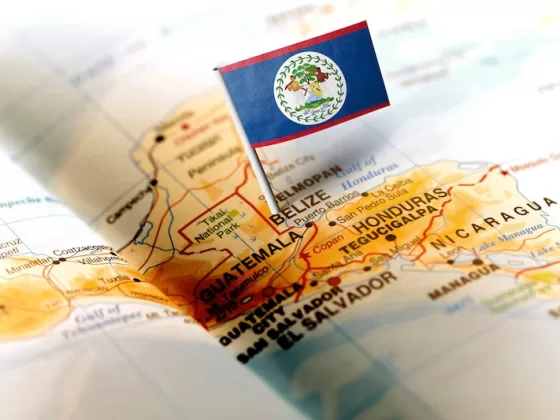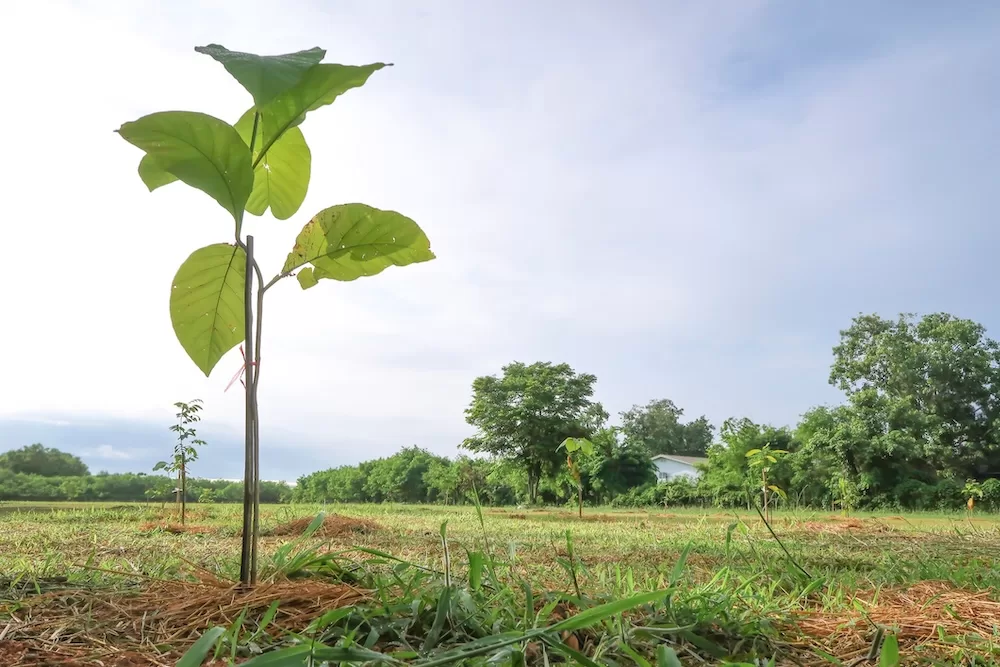Introduction: Latin American Economic Climate in Late 2023
As of late 2023, Latin America faced a unique economic crossroads, influenced by two major global forces. Firstly, the Federal Reserve’s highest fund rate in two decades created a ripple effect on monetary policy across Latin America. This surge in U.S. interest rates led to significant monetary tightening in the region, impacting local currencies, trade competitiveness, and fiscal balances. Secondly, a notable slowdown in Chinese economic growth presented challenges for Latin America. China, a key trade partner and investor in the region, experienced reduced growth projections, affecting demand for Latin American commodities and investments.
Latin American economies, after experiencing robust growth post-COVID-19, began to face greater uncertainty by the end of 2023. The GDP growth in the region was 7% in 2021 and 3.9% in 2022, but forecasts for 2023 pointed towards a slowdown, with an expected GDP growth of around 1.9%. This deceleration was attributed to weakening internal demand due to inflation, less effective expansionary monetary policies, and potentially reduced export revenue from China. For 2024, growth was projected to reach 2.1%, driven by more stable inflation levels, lower interest rates, and a favorable external sector.
The high-interest rates in the United States posed significant challenges for Latin America, directly impacting capital flows, exchange rates, and inflation. This made it difficult for Latin American countries to lower their own interest rates to stimulate domestic growth. Meanwhile, China’s slower growth posed risks for Latin American countries heavily reliant on commodity exports, potentially leading to reduced demand and lower prices.
Latin American policymakers faced the challenge of maximizing benefits from the global economy while mitigating external shocks. Diversifying trade partners and strengthening domestic economic fundamentals were seen as crucial strategies. The evolving dynamics between the U.S. and Chinese economies were expected to influence international alliances and partnerships, leading to potential diplomatic realignments and geopolitical implications in the region.
Economic Forecast for 2024
Latin America’s economic outlook for 2024 is marked by cautious optimism amidst a challenging macroeconomic and geopolitical landscape. The region’s growth in 2023 exceeded initial projections, reaching 2.2%, slightly above the 1.7% forecasted but still below the global average of 3.2%. For 2024, analysts anticipate a modest decline in growth to 1.9%, indicating a slow pace in overcoming deep-seated public discontent prevalent across the region.
Key countries within Latin America present varied prospects for 2024:
Brazil: The country enters 2024 with a focus on gaining a more pronounced role in global geopolitics under President Lula’s leadership. Brazil’s G20 presidency and controversial stances on international issues like the Russia-Ukraine conflict may influence its economic and foreign policies. However, domestic political stability is expected with municipal elections unlikely to cause significant upheaval.
Argentina: Political turbulence is expected in the first half of 2024, particularly under President Javier Milei’s administration, which was elected on a platform of radical change. Argentina faces legislative, judicial, and public opposition challenges, potentially limiting the president’s maneuverability in foreign policy and economic reforms.
Mexico: Predicted to enjoy policy continuity and stability, Mexico under Claudia Sheinbaum, if elected, is expected to maintain pragmatic policies that benefit from U.S. nearshoring. The nation’s geopolitical position as a bystander to global turmoil may offer economic advantages.
Overall, Latin America, led by Brazil and Mexico, in 2024 seems poised for stability compared to global economic uncertainties, yet domestic challenges and modest growth forecasts suggest a need for careful economic management and policy continuity.
Latin America Investment Trends in 2024
In 2023, Latin America’s investment landscape was shaped by a combination of persistent political uncertainty and a lack of economic competitiveness compared to other emerging markets. Despite these challenges, certain sectors attracted significant investment, driven by global economic shifts and regional advantages.
For 2024, the region is expected to see continued investment in areas buoyed by global economic trends. Nearshoring-related investments are set to play a pivotal role, as companies look to diversify their supply chains away from Asia due to geopolitical tensions and pandemic-induced disruptions. This shift is likely to benefit Mexico and Central American countries due to their proximity to the United States.
Additionally, sectors such as digital technology, renewable energy, and e-commerce are predicted to see substantial growth. The digital innovation surge, particularly in financial technology and e-commerce, is expected to attract more investors looking for high-growth opportunities. The region’s rich natural resources, especially in renewable energy like solar and wind, are also likely to draw increased investment, aligning with the global trend towards sustainable energy sources.
Overall, 2024 presents a mix of traditional and emerging opportunities for investors in Latin America, with a focus on sectors that align with global economic and environmental trends.
Major Industries and Opportunities in Latin America in 2024
Latin America’s economic landscape in 2024 will continue to be dominated by several key industries, each contributing significantly to the region’s GDP and offering unique opportunities for growth and investment.
Agriculture: As a cornerstone of the Latin American economy, agriculture plays a vital role. Countries like Brazil and Argentina are global leaders in soybean and beef production, while Colombia is renowned for its coffee. The agricultural sector faces challenges due to changing weather patterns, particularly with the El Niño phenomenon, causing droughts and impacting crop yields in various regions.
Mining: Latin America is rich in mineral resources, making mining a significant industry. Chile and Peru are world leaders in copper production, while Brazil is a major iron ore exporter. The mining sector attracts substantial foreign investment, though it is often subject to political and environmental scrutiny.
Manufacturing: The manufacturing sector, particularly in countries like Mexico, benefits from nearshoring trends as companies relocate production closer to U.S. markets. Industries such as automotive and electronics manufacturing are seeing growth due to increased demand and geopolitical shifts in global trade.
Digital Economy: There’s a surge in the digital economy across Latin America, with a focus on e-commerce, fintech, and digital services. Brazil and Mexico are leading the way, with tech startups and digital innovation hubs emerging as key contributors to economic growth.
Renewable Energy: Latin America is increasingly focusing on renewable energy, leveraging its natural resources like solar, wind, and hydropower. Countries like Chile and Brazil are investing heavily in renewable energy projects, aligning with global trends toward sustainable energy sources.
Emerging Industries: Tech startups, particularly in fintech and e-commerce, are rapidly growing. These sectors are attracting significant investment due to the region’s large and growing internet user base and untapped market potential.
Latin America’s major industries and emerging sectors will continue to present a diverse array of opportunities for investment and growth. The region’s economic future looks promising, with agriculture, mining, manufacturing, the digital economy, and renewable energy leading the way.
Challenges and Risks in Latin America for 2024
Investors in Latin America in 2024 must navigate a complex landscape marked by several ongoing challenges and potential risks:
Political Instability: Political instability remains a significant concern in the region. Events like the armed insurrection in Brazil’s capital in early 2023 and the political tensions in Venezuela highlight the unpredictable political climate. Such instability can lead to abrupt policy changes and regulatory uncertainties, affecting investment confidence and economic growth.
Economic Disparities: Latin America continues to grapple with stark economic disparities. While countries like Brazil and Mexico show signs of economic recovery and growth, others like Venezuela face profound economic challenges. This disparity can lead to social unrest and further political instability, posing risks to investors.
Inflation: Inflation is another critical challenge, with regional inflation reaching 18.0% in October 2023, mainly driven by price pressures in Argentina. Although most countries are expected to see lower inflation in 2024, runaway inflation in Argentina could continue to affect the regional economic outlook.
Lack of Economic Competitiveness: Compared to other emerging markets, Latin America’s economic competitiveness remains an issue. This lack of competitiveness can be attributed to various factors, including outdated infrastructure, bureaucratic hurdles, and a general reluctance to adopt more business-friendly policies.
Impact of El Niño: The El Niño phenomenon, which disrupts weather patterns, poses risks in both directions. It can cause droughts in some areas and increased rainfall in others, impacting agricultural production and causing economic uncertainty, particularly in countries dependent on agriculture.
Geopolitical Concerns: Although Latin America benefits from being a bystander to global geopolitical turmoil, increasing conflicts and tensions worldwide, such as in Ukraine and the Middle East, could indirectly impact the region, particularly through global trade and investment flows.
For investors, these challenges necessitate a cautious approach, with a focus on countries and sectors that show resilience and potential for growth despite these risks.
Regional Initiatives and Policies to Expect in Latin America in 2024
Latin America in 2024 continues to shape its economic landscape through various regional initiatives and policies, focusing on fostering growth and investment. Key developments in this domain include:
Policy Continuity and Geopolitical Positioning: The trend towards policy continuity in major countries like Mexico, under the expected leadership of Claudia Sheinbaum, and Brazil, with Lula’s active global diplomacy, is shaping the region’s economic policies. Brazil’s presidency of the G20 and its involvement in BRICS summits reflect its aspirations to influence global economic trends. This geopolitical positioning may open new avenues for trade and investment, albeit amidst diplomatic complexities.
Trade Agreements and Regional Cooperation: Latin America is actively engaging in trade agreements and regional cooperation initiatives to bolster its economic prospects. The Comprehensive and Progressive Agreement for Trans-Pacific Partnership (CPTPP), which includes Chile, Peru, and Mexico, is pivotal in integrating the region into the global trade network. Additionally, the Mercosur trade bloc, despite facing internal challenges, continues to be a significant platform for regional trade.
Impact of El Niño on Agricultural Policies: The El Niño phenomenon is influencing agricultural policies in countries dependent on this sector. Governments are prompted to adopt measures to mitigate the adverse effects of weather pattern disruptions, which can impact crop yields and consequently, the economy.
Political Developments Influencing Economic Strategies: Political developments in countries like Argentina, with a new president aiming for radical changes, are expected to shape economic strategies and policies. The Argentine government’s moves towards implementing its agenda, despite legislative and judicial challenges, will have implications for the country’s economic policy direction and investor confidence.
These initiatives and policies, among others, highlight Latin America’s efforts to navigate its complex economic and geopolitical environment. The region’s focus on maintaining policy stability, engaging in global trade networks, and adapting to environmental challenges underlines its strategy to enhance growth and attract investment in 2024.
Conclusion: Navigating the Future Landscape of Latin America
In 2024, Latin America stands at a pivotal juncture marked by a blend of opportunity and challenge. For expatriates, travelers, and investors, this dynamic environment presents a multifaceted tapestry of prospects. The economic landscape, though tempered by political complexities and macroeconomic uncertainties, is ripening with potential driven by emerging industries, digital transformations, and a gradual shift towards more stable and pragmatic policies.
Investors can find solace in the region’s commitment to continuity and adaptation in the face of global economic shifts. The burgeoning digital economy and renewable energy sectors, in particular, offer promising avenues for investment. Moreover, the region’s rich cultural and geographic diversity continues to make it an attractive destination for expatriates and travelers seeking vibrant experiences and opportunities.
The challenges of political instability and economic disparities, while significant, are counterbalanced by a growing focus on regional cooperation and economic integration. This evolving scenario suggests a landscape where risks are mitigated by informed strategies and an understanding of local contexts.
For those considering relocation, the diverse cultural, economic, and environmental landscapes of Latin America offer a unique blend of opportunities for both personal and professional growth. The region’s burgeoning tech hubs, alongside its traditional strengths in agriculture and mining, provide a rich ground for career development and business ventures.
In summary, Latin America in 2024 and beyond presents a mosaic of possibilities. While it requires careful navigation due to its complexities, the region holds immense promise for those looking to explore, settle, or invest. With its eyes set on future growth and stability, Latin America continues to be a region full of potential and opportunity.










